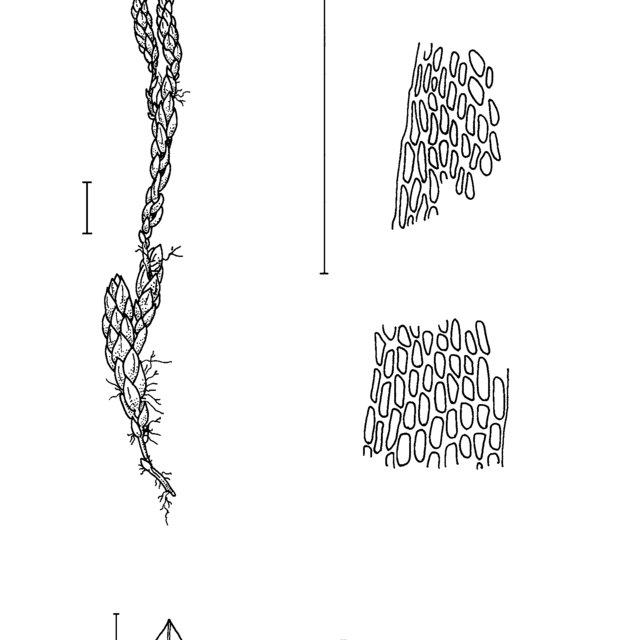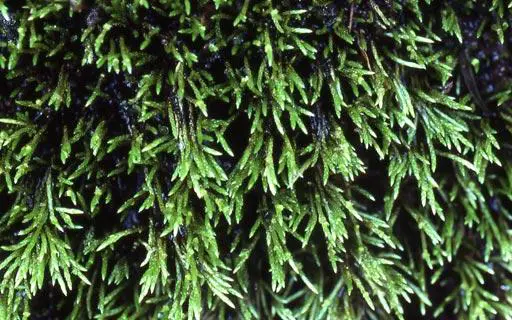
A-harriottii-a-habit-b-leaf-c-leaf-apical-cells-d-mid-laminal-cells-e-basal_Q640.jpg from: https://www.researchgate.net/publication/241505446_The_genus_Anomobryum_Schimp_Bryopsida_Bryaceae_in_Australia
Introduction
In the vast and captivating world of bryophytes, one particular moss species stands out for its unique charm and ecological significance – the Anomobryum Schimp. moss, also known simply as Anomobryum

Anomobryum_yasud2_031018L.jpg from: https://digital-museum.hiroshima-u.ac.jp/~museum/habit/moss_habit/Anomobryum yasudae/Anomobryum_yasudae.html
. Belonging to the Bryaceae family, this unassuming yet fascinating plant has captured the hearts of moss enthusiasts worldwide.
Background
Before delving into the intricacies of Anomobryum, it’s essential to understand the broader context of bryophytes. These non-vascular plants, which include mosses, liverworts, and hornworts, are often overlooked but play a crucial role in various ecosystems. They are among the oldest land plants on Earth, with a rich evolutionary history dating back millions of years.
Main Content
Morphology and Identification
Anomobryum is a small, acrocarpous moss that forms dense, cushion-like tufts or mats. Its stems are typically unbranched, and the leaves are ovate to lanceolate in shape, with a distinctive midrib running along their length. The sporophytes (spore-bearing structures) are relatively short, with a capsule that is often curved or inclined.
One of the key identifying features of Anomobryum is its distinctive calyptra (a cap-like structure that covers the developing capsule). Unlike many other mosses, the calyptra in Anomobryum is cucullate (hood-shaped) and often persists on the capsule for an extended period.
Global Distribution and Habitat
Anomobryum is widely distributed across various regions of the world, including Europe, Asia, North America, and parts of South America. It thrives in a variety of habitats, from moist and shaded areas to exposed rock surfaces and even disturbed sites like roadsides and quarries.
This moss species is particularly well-adapted to colonize and thrive in areas with periodic disturbances, such as forest clearings or areas affected by natural disasters like wildfires or landslides. Its ability to rapidly colonize these environments makes it an important pioneer species, paving the way for other plants to establish themselves.
Ecological Roles and Adaptations
Despite its diminutive size, Anomobryum plays a vital role in various ecosystems. It contributes to soil formation and moisture retention, creating favorable conditions for other plants to grow. Additionally, Anomobryum serves as a microhabitat for numerous invertebrates, providing shelter and food sources for these tiny creatures.
One of the remarkable adaptations of Anomobryum is its ability to withstand desiccation (drying out) and rapidly rehydrate when moisture becomes available. This trait, known as poikilohydry, allows the moss to survive in environments with intermittent periods of drought, making it a resilient and versatile species.
Case Studies/Examples
In a recent study conducted in a temperate forest ecosystem, researchers found that Anomobryum played a crucial role in facilitating the establishment of tree seedlings. The moss’s dense mats provided a suitable microclimate for the seedlings, retaining moisture and protecting them from desiccation during the critical early stages of growth.
Another fascinating example comes from a post-fire study in a boreal forest region. Anomobryum was among the first bryophyte species to colonize the burned areas, rapidly forming dense mats that helped stabilize the soil and prevent erosion. This early colonization paved the way for the eventual recovery of the forest ecosystem.
Technical Table
| Characteristic | Description |
|---|---|
| Phylum | Bryophyta |
| Class | Bryopsida |
| Order | Bryales |
| Family | Bryaceae |
| Genus | Anomobryum |
| Common Name | Anomobryum Moss |
| Growth Form | Acrocarpous, cushion-like tufts or mats |
| Leaf Shape | Ovate to lanceolate, with a distinct midrib |
| Sporophyte | Short, with a curved or inclined capsule |
| Calyptra | Cucullate (hood-shaped), persistent |
| Distribution | Widespread across various regions |
| Habitat | Moist, shaded areas, exposed rock surfaces, disturbed sites |
| Ecological Role | Soil formation, moisture retention, microhabitat for invertebrates |
| Adaptation | Poikilohydry (ability to withstand desiccation and rapidly rehydrate) |
Conclusion
The Anomobryum Schimp. moss, or simply Anomobryum, is a remarkable and resilient species that plays a vital role in various ecosystems worldwide. From its unique morphological features to its ability to colonize disturbed areas and facilitate the growth of other plants, this unassuming moss deserves our appreciation and admiration.
As we continue to explore and understand the intricate web of life on our planet, the study of bryophytes like Anomobryum reminds us of the importance of preserving and protecting even the smallest and most overlooked organisms. Who knows what other fascinating secrets these ancient plants hold, waiting to be uncovered by the curious minds of moss enthusiasts and researchers alike?